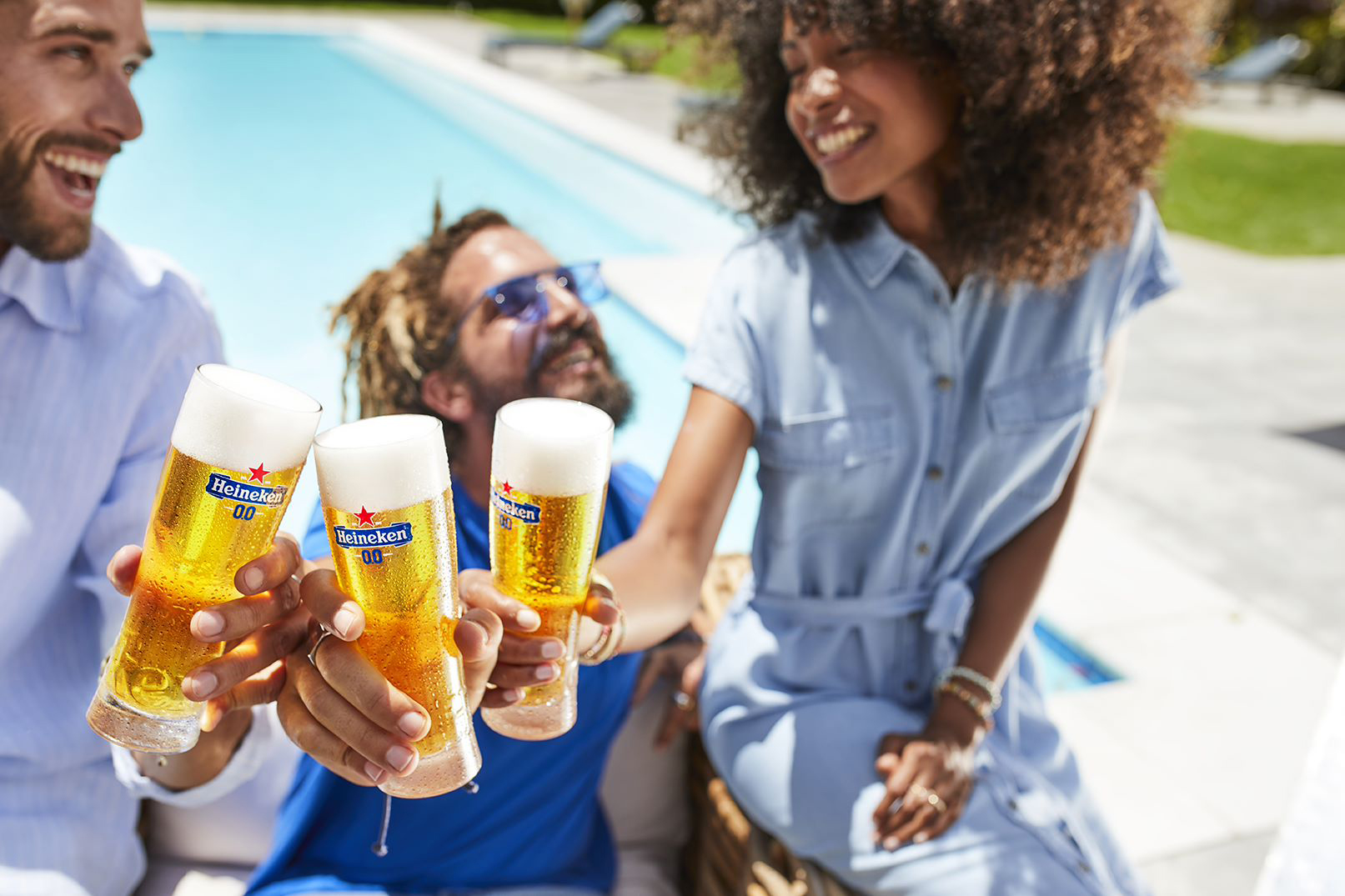Promoting moderation and addressing the harmful use of alcohol is an important societal challenge. The World Health Organisation (WHO) has called for a shift in consumption to low-alcohol products, as part of their global strategy for alcohol. As a responsible brewing company, contributing to this moderation agenda has long been a core priority for HEINEKEN.
Alcohol-free beer plays an important role by offering consumers a choice for every occasion. Research commissioned by the European Commission has demonstrated that the purchase of no-alcohol beers leads to long-term behaviour change towards lower alcohol consumption. However, producing alcohol-free beers that live up to consumer expectations is not an easy task – which is probably why, in the past, alcohol-free beers were a rather niche product.
To make a real difference, we had to create a true gamechanger: a high quality, great tasting alcohol-free beer that provides the same consumer experience as our other brands. By innovating in this area, we aimed to provide a real choice for the growing numbers of adults who either do not drink, want to reduce their alcohol consumption or who are looking for attractive alternatives for key occasions.
As a result, in 2017, we launched Heineken 0.0, a zero-alcohol extension of our flagship global brand. Since then, we have continued to invest in and drive the brand, and today Heineken 0.0 is the leading alcohol-free beer which is sold in more than 110 markets across the world.
Our recipe for innovation
Creating an alcohol-free beer but with the comparable taste, texture and complexity of alcoholic beer was no mean feat. It took the creativity and collaboration of our Master Brewers who worked across markets and our R&D department who utilised their foundational scientific knowledge about products and processes to come together to make this shared vision a reality. At the same time, we worked with leading universities and research institutes in the UK and the Netherlands to test concepts and fill any knowledge gaps.
Texture, flavour and complexity are all essential pillars defining the beer drinking experience. Building on insights from our consumers, and working with scientists, we conducted detailed analysis of taste and flavour compositions and learned about the sensory perception of consumers regarding their flavour needs for non-alcoholic beers. We then looked at how flavour components react in a non-alcoholic vs alcoholic beer context.
Once we had the winning formula in terms of recipe and taste, we looked at the technology around dealcoholisation and collaborated with our equipment suppliers to optimise the processes to ensure that they were scalable.
Bringing it home
The knowledge gained during the innovation process has been reapplied and built upon so that at the end of 2022 our zero alcohol beverages category had 289 zero alcohol products across 125 brands and spanning a variety of taste profiles (lager, flavoured beers, ciders).
Yet just having the right products wasn’t enough to truly revolutionise the market. The final challenge was to break down the barriers to consumer uptake and to change perceptions and behaviours. For this we needed some out of the box thinking.
We worked with experts in behavioural science to look at changing consumer behaviour to empower consumers to reach for the alcohol-free options. By using the power of our platforms, like Formula 1 and Champions League, we made moderation and 0.0 ‘cool’. In 2022 we launched the– ‘Cheers To No Alcohol’ campaign – which addresses the feeling of exclusion that can be experienced when choosing not to drink alcohol at social occasions.
In the same year, we also went one step further with the roll-out of Heineken 0.0 on tap in pubs and bars. This again required a breakthrough by our scientists to solve the problem of alcohol formation in the keg. We also collaborated with the UK’s leading soap operas to bring it to life in their fictional pubs which was another key step in normalising this choice.

Recommendations: Embracing all innovation
To build our innovation potential in Europe we need to fill two gaps. Firstly, innovation starts with creative people with an entrepreneurial spirit and the courage to aim high. The EU and national policymakers can promote this by ensuring our education and training systems encourage students to think outside of the box – helping them develop practical and theoretical knowledge and experience and offering opportunities to work with business on real-world challenges to develop these skills.
Secondly, we need to take a broader view of innovation and how we support it. Product innovations like Heineken 0.0 change lives and deliver societal benefits. Policy should also support and encourage investment in this kind of innovation. Innovation comes with a delicate balance of risks versus potential benefits, and instruments like innovations boxes and grant programs help to incentivise the necessary risk-taking that drives innovation.
Innovation doesn’t stop with bringing the idea to life. It takes many forms – not just product and process but also changing mindsets, creating new markets, and communicating in new ways. EU innovation policy and R&D support programmes, combined with the right kind of tax incentives, can have an even bigger impact if they embrace innovation in the broadest sense. This includes providing opportunities for business and the scientific and research community to work together to ensure that innovations are successful outside of the lab.

